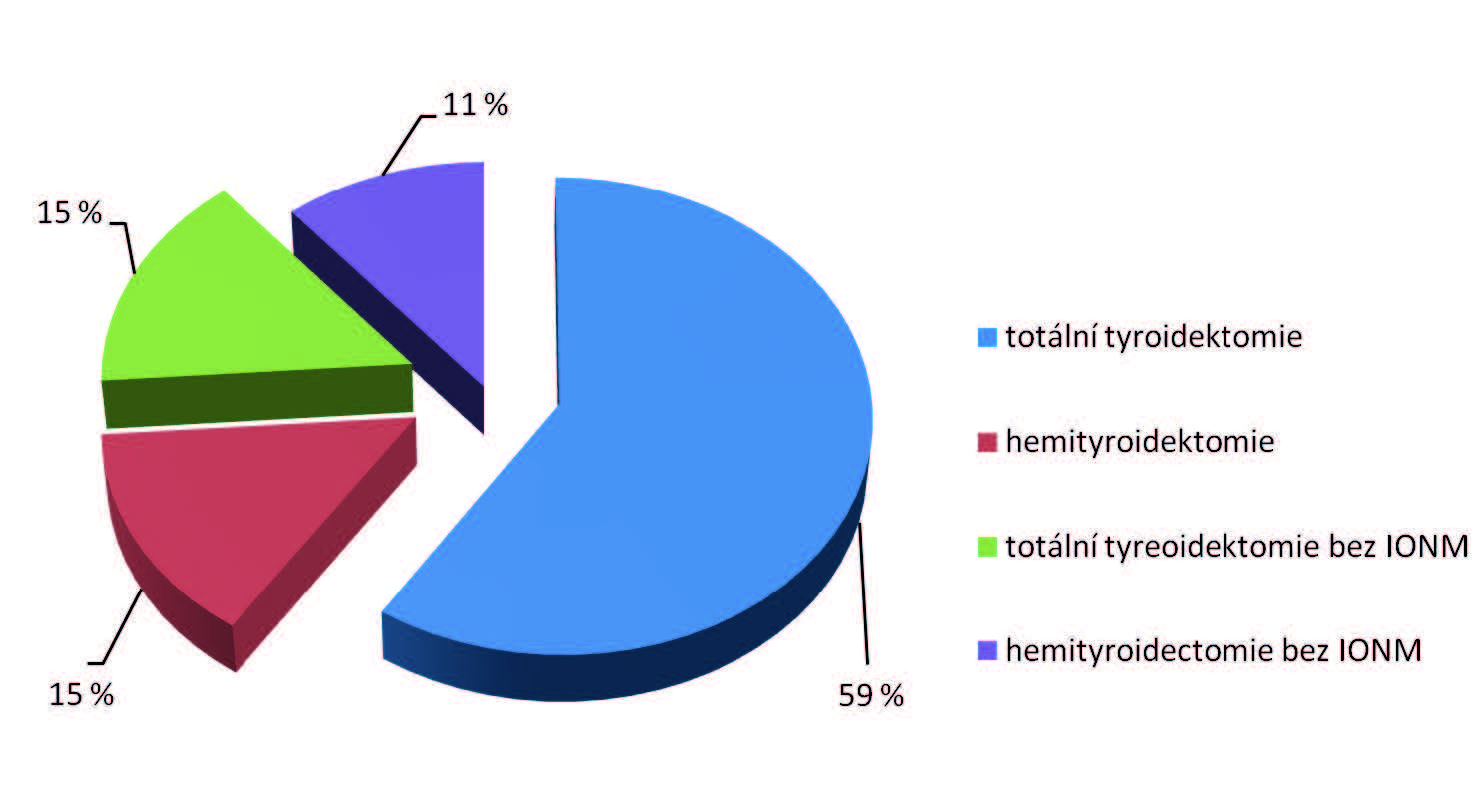Abstract
Introduction: Recurrent laryngeal nerve (RLN) injury one of the most serious complications of thyroid, parathyroid and cervical spine surgery. Injuries to external branches of superior laryngeal nerves are described as uncommon. This complication is so severe that it may actually result in disability of voice professionals (like teachers, singers, actors, speakers, managers, etc.). Enhanced efforts are developed in the current clinical practice to increase intraoperative RLN protection through electrophysiological monitoring of laryngeal innervation and simultaneous RLN visualisation.
Methods: The study was designed as a prospective observational study. A set of 100 consecutive procedures was selected from the overall set, randomised by surgeons to two groups: A – neuromonitoring (IONM) was used; B – RLN identification and visualisation without IONM. One team included an expert (more than 1000 procedures) and a surgeon in training (less than 100 procedures), and the other team includeda two experienced surgeons (one with more than 150 procedures and the other with more than 500 procedures). Each team performed several procedures a week. The comparison was performed using statistical methods and using the Index of Recurrent Injury (IRI). The purpose of the study was to compare the incidence of RLN paresis in procedures using neuromonitoring (IONM) and intraoperative visualisation of the anatomic non-injured nerve, performed by the two teams.
Results: We analysed 100 consecutive thyroid surgeries, 50 procedures both in group A and B. Group A included 43 total thyroidectomies and 7 hemithyroidectomies. Two cases of one-side...

